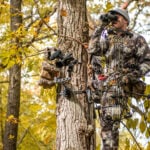Ethics in hunting specifically refers to a code of conduct that hunters should abide and practice while in the field pursuing game. For many, the game laws themselves dictate the actual ethical code; if it’s legal, then it’s ethical. However, is that always true, or are there times when something is not ethical, even though it’s legal? Let’s discuss a few cases where the lines between legal and ethical might be a little blurry.
Long Range Shots
One that immediately comes to mind is taking long range shots at game. Of course, long range is an operative term. Long range for some could be an effective range for others. For instance, when I was younger, most of my backyard shooting practice was done at 40 yards, and I got extremely comfortable at taking deer at that range. It didn’t feel like I was pushing the limits at all until a handful of experiences changed my perspective.
The first was a 35-yard shot at a buck that flinched at the sound of the shot. In fact, the deer did almost a complete 180 between the time I let the arrow fly and impact. Fortunately, it turned into the shot, and although my arrow hit extremely high, it still clipped the top part of one lung. Talk about a difficult tracking job! Almost two-thirds of a mile and very few drops of blood later, I found the deer piled up in a ravine. It was purely dumb luck to find that deer.
The second instance was with a crossbow about 10 years ago, a 38-yard shot at a deer. Again, the buck reacted to the shot. This time my arrow found the upper part of the deer’s front leg. I felt sick as I watched it hobble off with an obviously broken leg, knowing that it was a non-lethal hit.
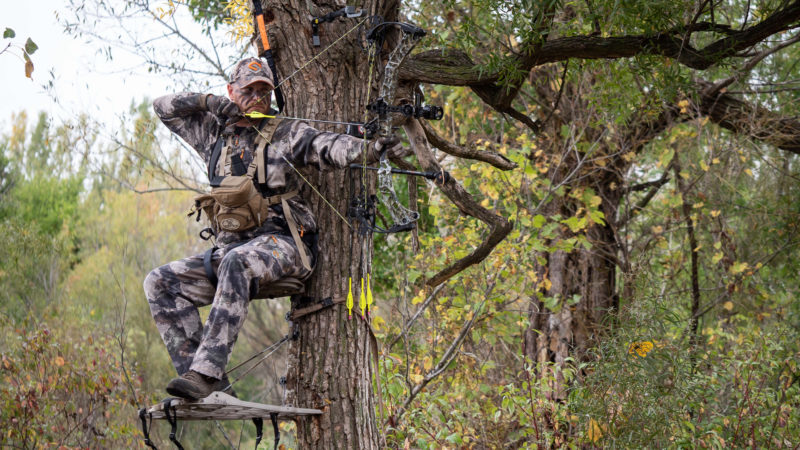
My point is this: long range shots are ethical until they’re not. You can practice all you want at long range, but wild game is not a stationary target, and they often react in unexpected ways.
While it’s true that some hunters may be more practiced and more effective at longer ranges, all it takes is seeing the buck of a lifetime at the outer fringe of their comfort zone to maybe cause them to push the envelope, too. And we all do it, particularly as younger hunters when we desperately want success.
One of the major mistakes new hunters make is that we think we have to increase our shooting range to kill bigger bucks. But we can become more ethical and successful hunters by simply continuing to learn and get better at stand placement and scent control so that we can get closer to our quarry and ensure that shot opportunities don’t push the limits of our skills or our equipment.
Shooting in Low Light
Where I live, legal shooting time is defined as 30 minutes before sunrise and 30 minutes after sunset. However, the amount of light available at these times is highly variable according to weather, cloudy conditions, etc. Sometimes, it’s dang near pitch black long before shooting time ends in the evening. In these cases, taking the shot is solely at the discretion of the hunter.
How many times have we sat on stand late into the evening and thought, “I’ll give it five more minutes”? Or we make excuses for staying later than what is ethical because “I can still see my pins” or “if that buck comes through that little opening, I’ll have just enough light to shoot.”
These are all things we tell ourselves that push the boundaries of what is ethical. It takes discipline to leave our stand while there’s still that hint of light that “might be enough” to make the shot.
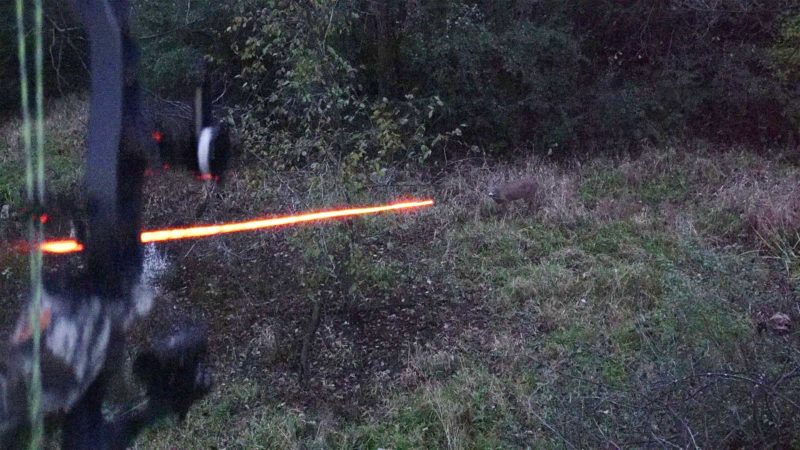
I had one of these experiences a few years ago on a buck I’d been after all season. Right at dark, the buck came walking up the tractor trail toward the apple tree I’d set up by. I could see the glow of its antlers above its head in the fading light. I got my crossbow into position and put the crosshairs on what I thought was its chest, but didn’t pull the trigger because I couldn’t absolutely define the front shoulder. I knew I was probably on him, but it was just dark enough that I couldn’t tell for sure if he was quartering to or quartering away.
I wanted to shoot that buck so bad! Ultimately, I realized I couldn’t ethically take the shot and let him walk. As it turned out, it was a good decision. Three days later, a storm moved in and the buck got on his feet a little earlier and came to the apple tree an hour earlier than usual, in full daylight, and I was there to make the shot.
Instances like these also come down to hunter maturity. As we get older, we learn from past mistakes, and there’s no doubt that a shot taken in low light (meaning when we can’t clearly distinguish our target) is an unethical shot.
Low Percentage Shots
We all know when we’re testing the limits of our abilities and/or our equipment. We know what is ideal and what is risky, and taking low percentage shots definitely falls into the category of risky, which makes them unethical.
Low percentage shots come in multiple forms. They could be shots taken at quartering-to, straight-on, or straight-away game, where we know the margin for error is basically nil. They could be at deer that are moving too fast. They could also be shots taken from too high of an elevation, where our chances of a double-lung hit are much lower.
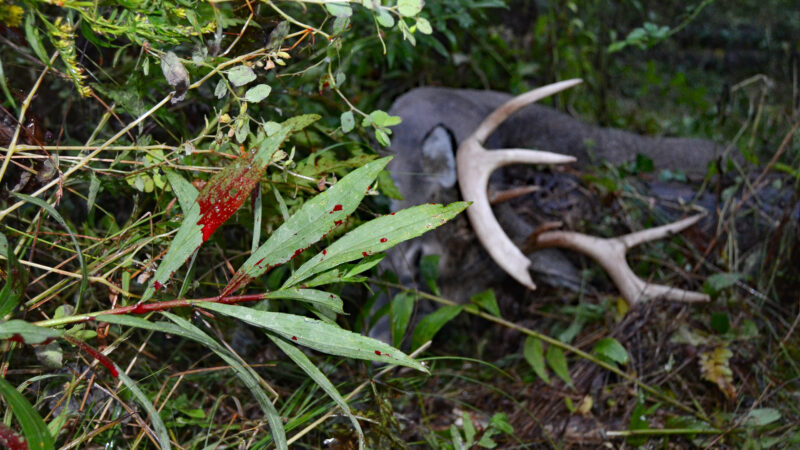
Truth is, we all have absolute belief in our equipment and our shooting skills, and if you don’t, then you should probably be spending more time practicing until you do. One of the worst, and most unethical, decisions you can make, is hunting before you’ve become proficient with your weapon of choice. But sometimes even that isn’t enough. You also have to have the discipline to wait for the right opportunity and only take high percentage shots at broadside animals that are standing still.
Again, I think this comes down to maturity and experience. Low percentage shots result in failure more often than they do success, and they are unethical.
Fair Chase and Other Concerns
Let’s look at the Pope & Young Club as a model of ethics, which they directly link to the principles of fair chase. The Pope & Young Club specifically defines this as “the ethical, sportsmanlike, and lawful pursuit of free-ranging wild game animals in a manner which does not give the hunter an improper or unfair advantage over the animal.”
That’s a great definition, but it leaves a lot up to individual interpretation. What is considered an unfair advantage? Is posted property an advantage? Are food plots an advantage? Is baiting? How about the use of trail cameras or even scent-killing products? It would be hard to argue that these are NOT advantages, and depending on who you talk to, many of these could be considered unfair.
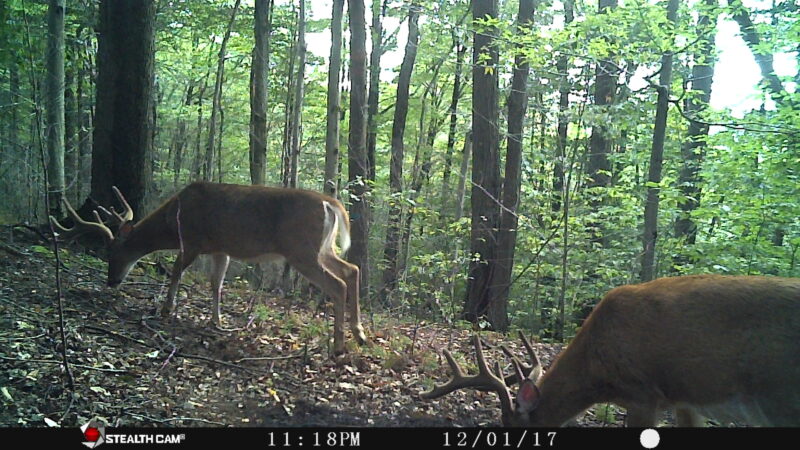
To be clear, I’m not condemning any of these practices, and I have personally implemented all of these into my hunting strategy at one time or another. And something that’s considered an unfair advantage to one person, or even one geographic location, may be considered a huge part of the hunting tradition to another person or area. My point here is that it’s dangerous, if not hypocritical, to try to apply one blanket code of ethics to hunters everywhere without taking into consideration regional traditions and customs a well as what is now commonly accepted as a part of modern hunting tactics.
Instead of wasting our time discouraging other hunters for how they hunt (over bait, where legal, for instance), we should be spending more time on education about the pitfalls of taking shots at long range, shooting in low light, and taking low percentage shots. At the end of the day, how quickly and humanely we kill our prey will determine how ethical we are as hunters.

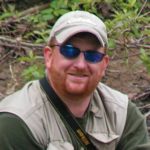 By
By 
